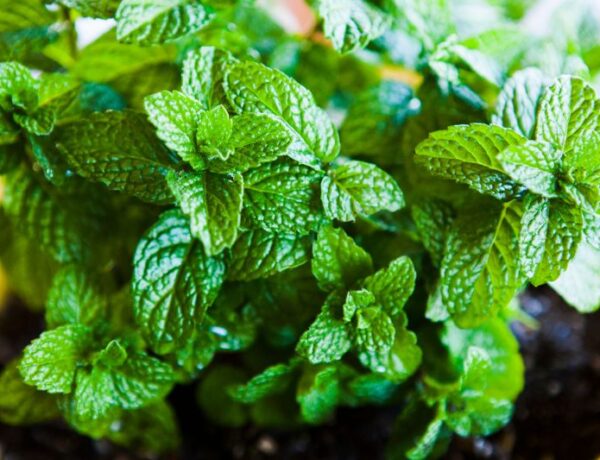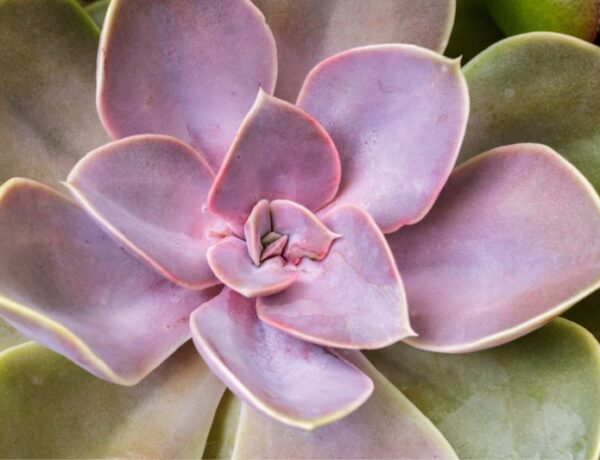Philodendron Brandtianum, also known as Silver Leaf Philodendron or simply Philo Brandi, is a tropical gem native to the lush regions of Central and South America.
As a low-maintenance plant, its care is a breeze, making it the perfect choice for busy plant enthusiasts. Despite being somewhat elusive and carrying a slightly higher price tag, this rare philodendron variety is worth the investment once you lay eyes on its heart-shaped foliage branded with shimmering silvery patches.
Philo Brandi can flourish in various settings, including hanging baskets and terrariums. And with its swift growth and potential to reach up to 5 feet (1.5 meters) in height indoors, this silvery plant will make a stunning statement even in the coziest of apartments.
Table of Contents
1. Taxonomy & general Information
| Scientific name: | Philodendron brandtianum |
| Common names: | Silver leaf Philodendron, Philodendron Brandi, Philo Brandi, Brandi Plant |
| Native to: | Colombia, Brazil, and Bolivia |
| Toxicity: | Like all members of the Araceae family, Philodendron brandtianum is toxic to humans and animals |
| Category: | Hanging and trailing houseplant |
| Growth rate: | Medium to fast |
| Height: | 4 – 5 feet (1 – 1.5 meters) indoors |


2. Philodendron Brandi Care & Growing Requirements
Caring for a Philodendron Brandtianum indoors is an easy job. This silver leaf plant is low maintenance and resilient, thriving even without constant attention.
» Watering
Philodendron Brandi should be watered regularly. In summer, water it two or three times a week, but during winter, reduce the frequency to once a week or less. Let the soil’s top layer dry out between waterings, and watch for droopy leaves that signal too much or too little water. To prevent overwatering, ensure the soil isn’t soggy, as this can cause root rot.
And don’t worry if you forget to water it once or twice, this plant won’t die on you that easily.
» Lighting
Although tolerant of various light conditions, Philodendron Brandi grows best in bright, indirect light. When placing this silver leaf plant outdoors, choose a spot with filtered sunlight to avoid scorching the leaves in direct sun.
» Soil
Well-draining, nutrient-rich soil is ideal for your Philodendron Brandi. Avoid soil that dries too fast or retains excessive moisture.
You can incorporate ingredients like peat moss, perlite, or vermiculite to create an airy, moisture-retentive blend that allows the roots to breathe and prevents waterlogging. Adding worm castings to the soil is an excellent idea too, as they provide essential nutrients, beneficial microorganisms, and improve the soil structure.
To incorporate worm castings into your existing soil mix, add about 10-20% worm castings to the blend, making sure it’s thoroughly mixed before potting your plant.
Also, a pot with drainage holes is recommended to prevent “wet feet,” which no indoor plants enjoy.
» Temperature
As a tropical plant native to Central and South America, Philodendron Brandtianum prefers a warm environment with temperatures ranging from 65ºF to 95ºF (18-35 ºC). In general, average room temperatures are perfect for this plant.
However, you should protect it from drafts, sudden temperature fluctuations, and extremely cold conditions, as it is not cold-resistant. So if you live in an area with freezing winters, make sure to keep your plant in a warm spot indoors.
In USDA hardiness zones 9b to 11, where freezing isn’t an issue, you can even grow it outdoors.
» Humidity
Though Philodendron Brandtianum can adapt to various humidity levels, it prefers higher humidity conditions, typically around 50-60%.
To increase humidity around your Brandi plant, consider using a humidifier, placing a tray filled with water and pebbles beneath the pot, or clustering it with other humidity-loving plants.
Regularly misting the plant’s leaves with water can also help, but make sure there is proper air circulation to avoid fungal issues.
» Fertilization
Philodendrons, including the Brandi variety, are not heavy feeders and can thrive with moderate fertilization.
However, to encourage even healthier and more vibrant foliage, consider using a fertilizer with a ratio of 15-5-10, as the higher nitrogen content in this ratio promotes leaf growth. You can apply it every 6-8 weeks during the growing season (spring and summer).
If you already incorporated compost or worm castings into your potting mix when planting your, additional fertilization might not be required immediately. Instead, you can observe your Brandtianum for signs of slowed leaf growth, which indicates that it might be time to feed it.
3. Silver Leaf Philodendron maintanance & Propagation
» Repotting
Repotting your Philo Brandi is essential to accommodate its growing root system and refresh the soil with added nutrients. Usually, it’s recommended to repot your plant every two years or when you notice that the roots are becoming cramped in the current pot. Spring and early summer are the ideal times for repotting, as the plant is in its active growth phase.
To repot your Philodendron Brandtianum, choose a pot that is one to two inches (2.5 – 5 cm) larger in diameter than the current one. Make sure the new pot has drainage holes to prevent waterlogging.
Fill the bottom of the pot with a well-draining soil mix and carefully remove the plant from its old pot. Gently loosen the root ball to stimulate new root growth, and place the plant in the new pot. Fill the remaining space with the soil mix, ensuring the plant is well anchored.
» Pruning
By pruning your Philodendron Brandtianum you can maintain its shape, size, and encourage bushier growth, while also removing dead, damaged, or yellowing leaves that usually affect a plant’s appearances.
To prune your silver leaf philodendron, use a clean, sharp pair of scissors or pruning shears. Cut just above a leaf node (the point where a leaf connects to the stem), making sure not to damage the healthy part of the stem.
You can also trim back any excessively long vines to maintain a compact, fuller appearance.
» Propagation
Propagation is an excellent way to expand your plant collection or share your silver leaf philodendron with friends and family. The easiest way to propagate a Philodendron Brandtianum is by using stem cuttings, ideally during the growing season (spring and summer).
To propagate, follow these simple steps:
- Identify a healthy stem with at least two to three leaves and an aerial root node (a small nub on the stem where roots can grow).
- Using clean, sharp scissors or pruning shears, cut the stem just below the aerial root node.
- Remove the lower leaf, ensuring that the aerial root node is exposed.
- Place the cutting in a container filled with water or plant it directly in a well-draining soil mix. If using water, make sure to change it every few days to prevent bacterial growth.
- Place the cutting in a warm and bright spot, avoiding direct sunlight.
- After a few weeks, you’ll notice new roots growing from the node. Once the roots are well-established, transfer the cutting to a pot with a well-draining soil mix.
And if you want to explore other options, make sure to check our article on ways to propagate a philodendron plant.
4. Common issues while growing a philodendron brandtianum
The most common issues in Philodendron Brandtianum, like many other houseplants, are often related to improper care and environmental factors. By understanding and addressing these issues, you can help your plant thrive. Some of the most common issues include:
- Yellowing leaves: Yellow leaves may indicate overwatering or poor drainage. Ensure you’re allowing the top layer of soil to dry out between waterings, and use a well-draining soil mix in a pot with drainage holes. Yellowing can also result from insufficient light or nutrient deficiencies. Make sure your plant is placed in bright, indirect light and fertilize it according to the recommended schedule.
- Brown leaf tips or edges: This issue is often caused by low humidity, underwatering, or exposure to direct sunlight. Increase humidity around the plant, water it more consistently, and move it to a spot with filtered light to prevent further browning.
- Droopy leaves: Drooping leaves can result from both overwatering and underwatering. Check the soil’s moisture level and adjust your watering schedule accordingly. Additionally, ensure your plant is placed in a well-lit area with proper temperature and humidity levels.
- Leggy growth: Legginess, or long, spindly stems with sparse foliage, can result from inadequate light. Move your Philodendron Brandtianum to a brighter location with indirect sunlight to encourage fuller growth. Pruning back leggy stems can also stimulate bushier growth.
5. Dealing with pests and diseases
Pests and diseases can be a challenge for indoor plants, including the Philodendron Brandtianum. Common pests such as spider mites, mealybugs, and scale insects can cause damage and weaken your plant, while fungal and bacterial diseases like leaf spot or blight may develop due to high humidity and poor air circulation.
To combat these issues, regularly inspect your plant for signs of infestation or disease, and maintain proper humidity levels and air circulation. Early detection and treatment are important to keeping your silver leaf philodendron healthy.
If you’re suspecting your plant might be infested, make sure to check out our article on the most common pests in indoor plants and how to deal with them.
Conclusion
With its striking silver-patterned, heart-shaped leaves, Philodendron Brandi makes an exceptional addition to any indoor plant collection. Its relatively low-maintenance nature and adaptability to various conditions make it an excellent choice for both beginner and experienced indoor gardeners.
With proper care and attention, this tropical gem will reward you with its captivating foliage and steady growth, enhancing the beauty of your indoor space.






No Comments